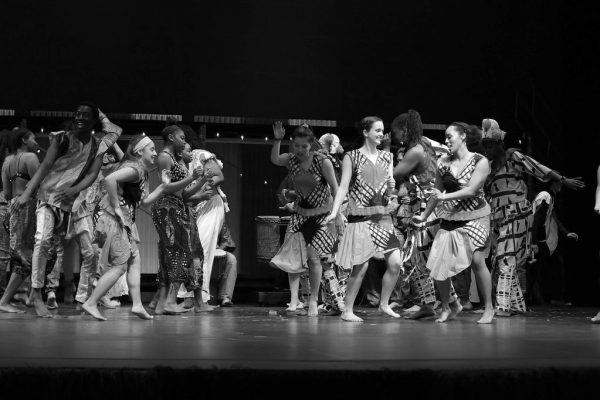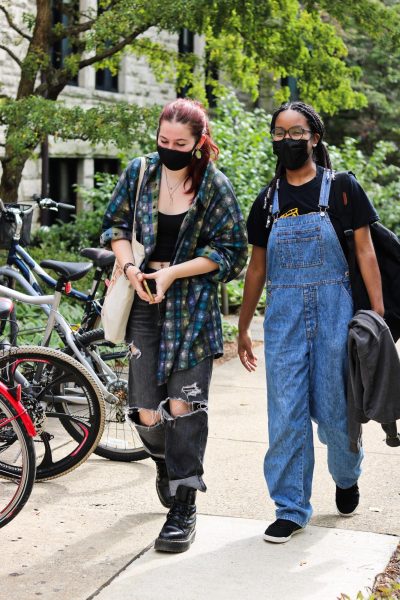Examining Oberlin’s History Rewarding, Provides Insight
Editor’s note: This column is the first in a series that will focus on Oberlin’s history as a town and an institution. The series will be published regularly throughout the fall semester.
Through the decades, Oberlin has demonstrated a strong commitment to documenting and preserving its own history. Mudd Center boasts extensive archival collections; for a town and college of modest size, a surprising number of books and essays have been written about Oberlin. While many Oberlin historians have had some connection with the college or town, many journalists and scholars from outside of this community have also taken an interest in Oberlin’s historical impact on the broader trajectory of American history.
This past Winter Term, I read Elusive Utopia: The Struggle for Racial Equality in Oberlin, Ohio by Professors Emeriti of History Carol Lasser and Gary Kornblith. The book focuses on racial politics in Oberlin’s early history, exploring why a community that firmly advocated for the abolition of slavery also held deeply-entrenched racist values, which became particularly visible after the Civil War and into the early 20th century.
I couldn’t put the book down. I was fascinated not only by its content, but also by the fact that it was even written. I decided to dive into my own study of Oberlin’s history, in the form of a private reading with Professor of Comparative American Studies Wendy Kozol. I didn’t have any specific direction I wanted to move in; rather, I wanted to saturate myself in the history of this place in order to more fully understand its present form as well as its broader impacts.
Alongside Elusive Utopia, my research materials included books like The Town That Started the Civil War by Nat Brandt, and autobiographies by Charles Grandison Finney and John Mercer Langston. I read a collection of essays by Geoffrey Blodgett, longtime history professor at Oberlin, compiled in a volume called Oberlin History: Essays and Impressions. I spent quite a bit of time in College’s archives in Mudd Center as well as the Review’s online collection, which dates back to the paper’s founding in 1874.
I quickly realized that the scope of everything that’s out there was much broader than I had originally thought. It began to seem as though the Oberlin community had documented every moment of campus tension, communal exhilaration, and unnerving apprehension throughout its long history. This attention to detail pushed me to two initial conclusions that framed my work through the remainder of the semester.
First, Oberlin has been arrogant throughout its history. We have always had a sense that what is happening right here on campus matters to the rest of the world. This attitude holds up today in our sometimes-mocked admissions motto, “Think one person can change the world? So do we,” and in the rhetoric used by the steering committee of the now-concluded Academic and Administrative Program Review — “the world needs Oberlin, and it needs Oberlin’s graduates,” the committee wrote in a document shared with the campus community in late March. For more info on the AAPR and its recommendations, you can refer to the Review’s previous coverage.
However, this arrogance is not always bad or misplaced. Indeed, what happens here quite often does reverberate through time and space. Still, this arrogance has led to what Blodgett characterizes as a series of institutional mythologies, in which we valorize key moments or figures from Oberlin’s history that are, in reality, much more complicated than we make them out to be.
Second, my research reminded me of the importance of journalism as a historical resource. In my research, I relied heavily on the Review’s archives, which provide a fascinating and insightful record of campus and community life stretching back nearly 150 years. Oftentimes, these articles — written by students in real time — challenge subsequent analysis by faculty and outside researchers, which added incredibly valuable nuance to what I was reading.
The Review archives also reminded me of the vital importance of maintaining high standards of journalistic ethics. Over my time as an editor, I have learned anecdotally that the Review has not always maintained such standards; in the past, it has regularly misquoted and misrepresented community members. Diving into the archives made it clear that these mistakes are damaging not only in the moment, but decades down the road as well. My research could only be as strong as my trust in the integrity of prior Review editors and reporters.
Over the course of this semester, I will share some more of my thoughts about this place’s history in a series of columns published in the Review. These columns are not meant to be a comprehensive look at Oberlin’s history, or even my work over the last semester; rather, they are about smaller moments — those that didn’t necessarily shift the institution’s trajectory, but that mattered deeply to community members at the time. I feel that each of these provides an important window into the past that can often help inform the present.
Researching Oberlin was complicated, but also incredibly rewarding — particularly as we grapple with a post-AAPR reality that will shape the trajectory of this institution for decades to come. I found the process of diving into the past to be incredibly instructive with regard to the present moment. I hope you do, too.




